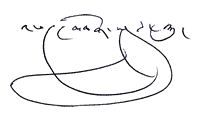Dear friends near and far,
As always, I hope this message finds you well, healthy and happy. On today’s Guru Rinpoche day, I’d like to share with you all, my Dharma brothers, sisters, and friends, the key point of all the practices and teachings transmitted to us by the Buddha, Guru Padmasambhava, the bodhisattvas, and great masters: namely, overcoming the four great obstacles, which we call the four maras.
The four maras are the four main obstacles of all Dharma practitioners, but they are active in the lives of all beings, appearing as four fixations. Their traditional names are the mara of the aggregates, the mara of the Lord of Death, the mara of the afflictions, and the mara of the gods. What these correspond to are, respectively, clinging onto the aggregates; fixating on the idea of death; clinging onto our thoughts and emotions; and being attached to distraction.
These maras can be explained in terms of our fixations, or in terms of their names. The fixation aspect is simple: We are attached to our physical and mental aggregates—the body, its sensations, our feelings and thoughts. We fixate on death and dying, which we therefore fear. We cling onto our negative thoughts and emotions, feeding them instead of eliminating them. And we are attached to pleasure and enjoyment, so that we seek out distractions that make us numb and indifferent, keeping us from looking deeper and asking important questions.
Understanding the names of each of the maras also provides us insight into them. The mara of the aggregates is named this way with respect to the basis. The aggregates are the basis onto which we cling, whence our ego-clinging and all other negative emotions arise. Therefore, the mara of the aggregates is so-called due to the basis.
The mara of the afflictions is named this way with respect to our deluded nature. We do not have to create the afflictions, or desire them to arise. They are just there, naturally present within us. Therefore, the mara of the afflictions is so-called due to our deluded nature.
The mara of death is named this way with respect to ignorance. Because death is surrounded by so much uncertainty, we fear it and are anxious about it. This makes us confused as to how to face it, confused as to how to prepare for it, confused with regards to our practice. All of this is due to ignorance, which we call the mara of death.
Finally, the mara of the gods, or distraction, is called this way based on stories or parables. The main parable for it is that of Mara Garap Wangchuk, who was the king of maras. He was thought to create powerful illusions in order to stir attachment, anger, or delusion in beings’ hearts. This and other stories can help us understand the mara of the gods. For instance, when we go to see a movie, we feel all the emotions that are displayed on the screen, as if we were truly experiencing the story that is a mere creation and projection. In the same way, the mara of distraction catches us in its stories in order to sway us into all sorts of emotions and sensations.
Thus, the four maras get their names respectively from the basis, our nature, ignorance, and parables. But all of them share the same root: fixation. Therefore, as practitioners, our main aim should be to reduce our fixation on the aggregates, negative emotions, death, and distraction. We can do so by realizing that they are all changing and impermanent, and can therefore never bring lasting happiness or fulfillment. The mara of distraction is a very tangible example of the unsatisfactory nature of impermanent things: so many of us search for happiness through temporary pleasures and distractions, yet we remain unsatisfied and unfulfilled. Lasting happiness cannot be found in changing phenomena. On the other hand, these maras cannot bring a total end to anything either, and there is therefore no reason to fear death, as many of us do.
Thus, practicing the Dharma doesn’t have to mean anything lofty or complex. What it comes down to is just study, contemplation, and cultivation: studying the meaning and names of the four maras; contemplating their changing and impermanent nature; and cultivating detachment from them.
That is why my root guru Kyabjé Nyoshül Khen Rinpoche used to say that Dharma means only one thing: transformation. The entirety of the Dharma comes down to transforming one’s mind by observing it, understanding it, seeing its negative thoughts and emotions, and reducing our clinging onto it all.
Therefore, please keep these key points in mind if you truly wish to practice the Dharma.
With all my love and prayers,
Sarva Mangalam.

Phakchok Rinpoche
Translations
Català
简体中文
繁體中文
Français
Deutsch
Ελληνικά
Bahasa Indonesia
日本語
नेपाली
Polski
Português
Русский
Español
ภาษาไทย
Українська
Tiếng Việt






Responses